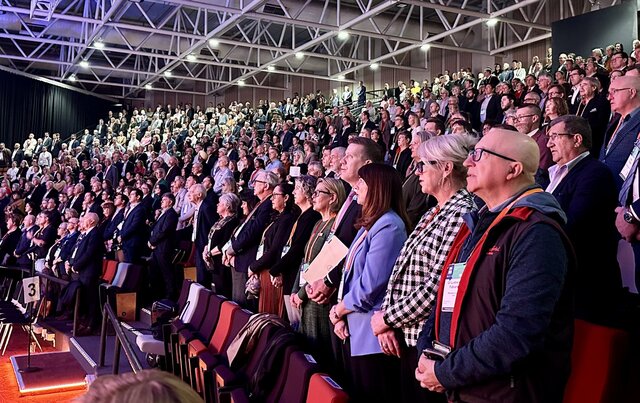By Jeff Oughton*
The key concerns of small, medium and corporate business identified in National Australia Bank’s latest surveys are the outlook for sales/demand, a tight labour market and to a lesser extent tighter financial conditions and sever drought. In early 2007, the economic data will be monitored to see if the Reserve Bank (RBA) responds by raising cash rates for the fourth time since May 2006 – probably in early February by another quarter of a percentage point to 6.5 per cent.
Despite the slowdown in real spending growth during 2006, some cost and price pressures have emerged. While the majority of businesses expect higher rates, only nine per cent of businesses see interest rates as the main constraint on cash flows during the next year.
A quarter of businesses cite demand as the main constraint, while wage costs and the availability of labour are highlighted by 14 per cent and 22 per cent of businesses, respectively. Poor seasonal conditions across most parts of Australia, increased competition and the Australian dollar are also cited by a significant proportion of businesses.
Customer confidence and domestic demand
Domestic spending growth moderated significantly during 2006 and is forecast to remain modest during 2007 – albeit conditions will remain disparate across some regions and industries. A number of macroeconomic drivers are at play. First, higher cash rates will weigh on discretionary consumer spending – not withstanding continued support from solid gains in household incomes and share markets. More generally, the multiplier effects of lost rural production and lower farm incomes will significantly spillover from regional to metropolitan Australia.
Secondly, following four very strong years, global activity looks set to moderate during 2007, led by a “soft landing” in the US. Overall, retail spending growth is forecast to expand at a moderate pace and residential construction to remain under modest downward pressures – capped by higher interest rates and only subdued gains in most housing markets.
Looking forward, the recent very strong expansion of business investment is likely to slow further – as commodity prices peak, cost pressures persist and softer global activity emerges.
Labour market
Labour market conditions are tight, with the unemployment rate at its lowest since the 1970s. Businesses are reporting significant difficulties finding suitable labour – especially in construction and business, property and health services. Against that, to date, there are few signs of any significant pickup in aggregate wage pressures – apart from mining and construction – as well as the public sector. As growth moderates and unemployment rises a bit, these pressures should ease somewhat – albeit some sectors face little respite from limited spare capacity. Employers, on average, in NAB’s business survey have lowered their expectations to around three per cent per annum for new agreements to be completed during the next year – post the new industrial reforms.
Commodity prices, input costs, the $A and trade returns
During the past few years, the sustained strength of the global economy, in particular China, has led to upward pressures on mainly non rural commodity prices, such as oil, coal and iron ore and base metals, to push Australia’s terms of trade to its highest level in 50 years as well as the $A to above “normal” levels. Currently, a small proportion of businesses highlight a “too high” $A as the main constraint on profitability.
NAB sees export returns, on average, staying close to recent highs during the near term, before slower global activity and increased supply lower prices significantly during 2007/08 and further over the medium term. This will also most likely see the exchange rate return to lower levels.
In the meantime, the China boom is boosting returns for bulk resource commodities and related industries and incomes in some regions, but squeezing margins of many down stream producers – especially those with limited scope to pass on cost increases.
Inflation and interest rates
Sustained high levels of capacity utilisation across the business sector as a whole, the tight labour market and rising commodity prices boosted underlying consumer inflation during 2006. The RBA forecast is for underlying inflation to continue to run at around three per cent during the next year – the top of its target band – and for some moderation in the medium term.
Like the majority of businesses, financial markets anticipate a further tightening during the first half of 2007. NAB however sees this as less likely. NAB’s most likely scenario is for the RBA to remain on hold in early February and during 2007 as a whole, as a modest domestic demand growth is sustained in Australia.
Where we could be wrong?
At home, the most worrisome would be prolonged dry and hot conditions into next winter. Another issue is the increased cost pressures spilling over into the broader economy and resulting in higher cash rates. The latter could well slow spending more than expected, as the household sector increased savings and consolidated its financial position.
Abroad, a “hard landing” brought about by a disorderly adjustment of global financial imbalances, notably overly priced housing in parts of North America and Europe, or geopolitics would necessitate a review of the economic environment and business plans.
On the positive side, however, financial markets remain supportive for growth – driven by low long term bond rates, low business risk premia and strong share markets. Emerging economies, including China, India and Russia, may well continue to drive increased global activity as growth rebalances across the US, Europe and Japan.
* Jeff Oughton is Head of Australian Economic and Industry Analysis, Group Economics, with the National Australia Bank.







